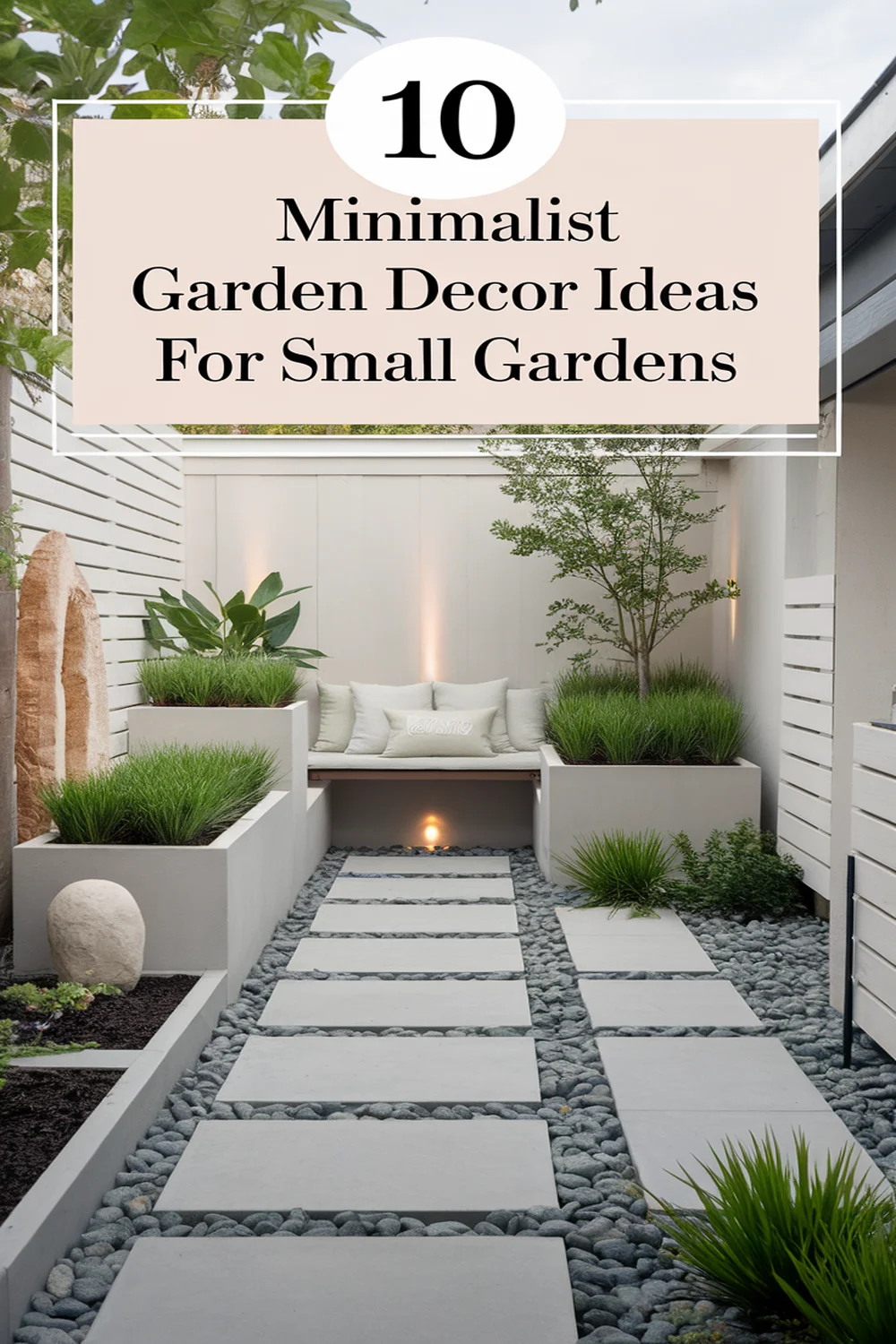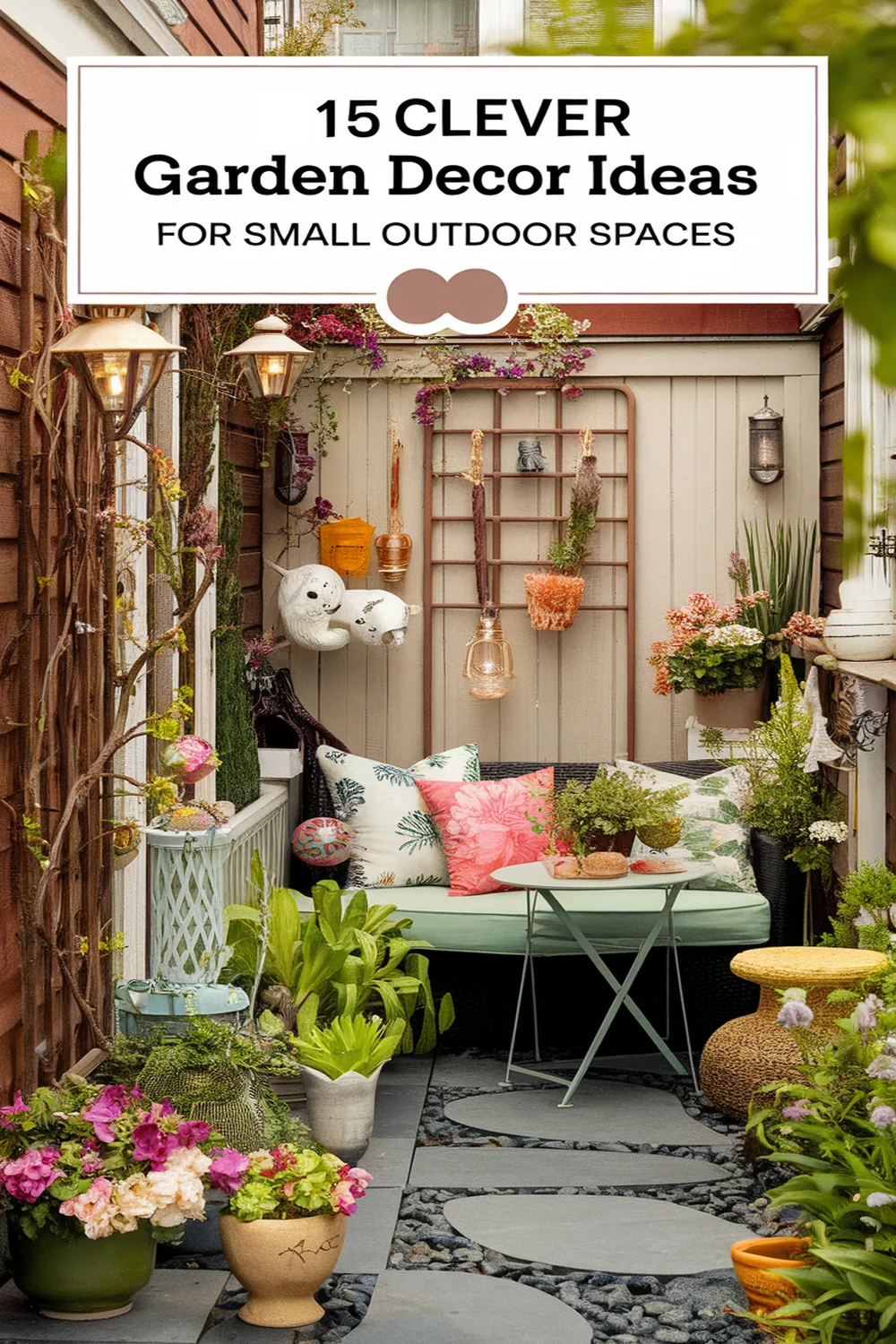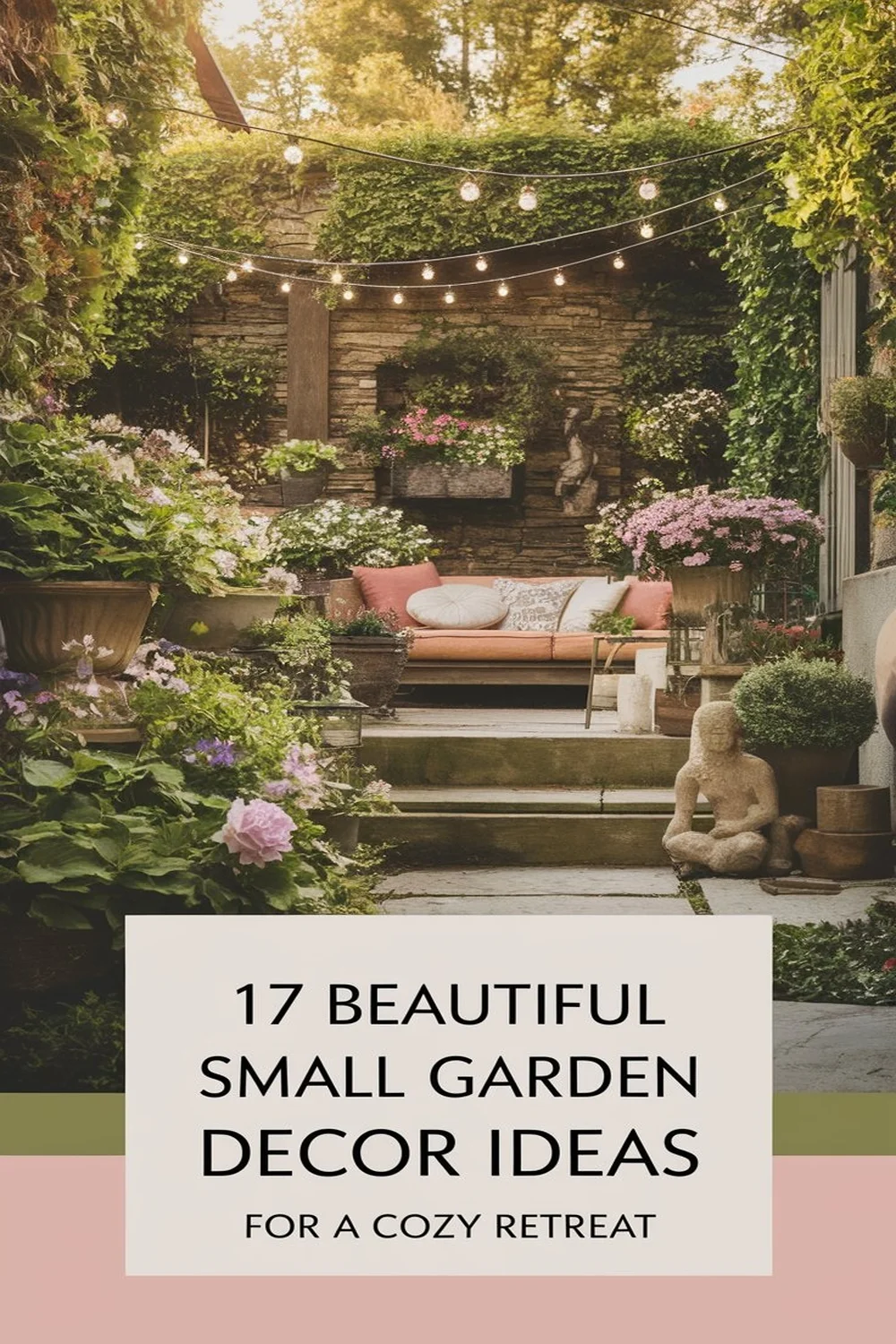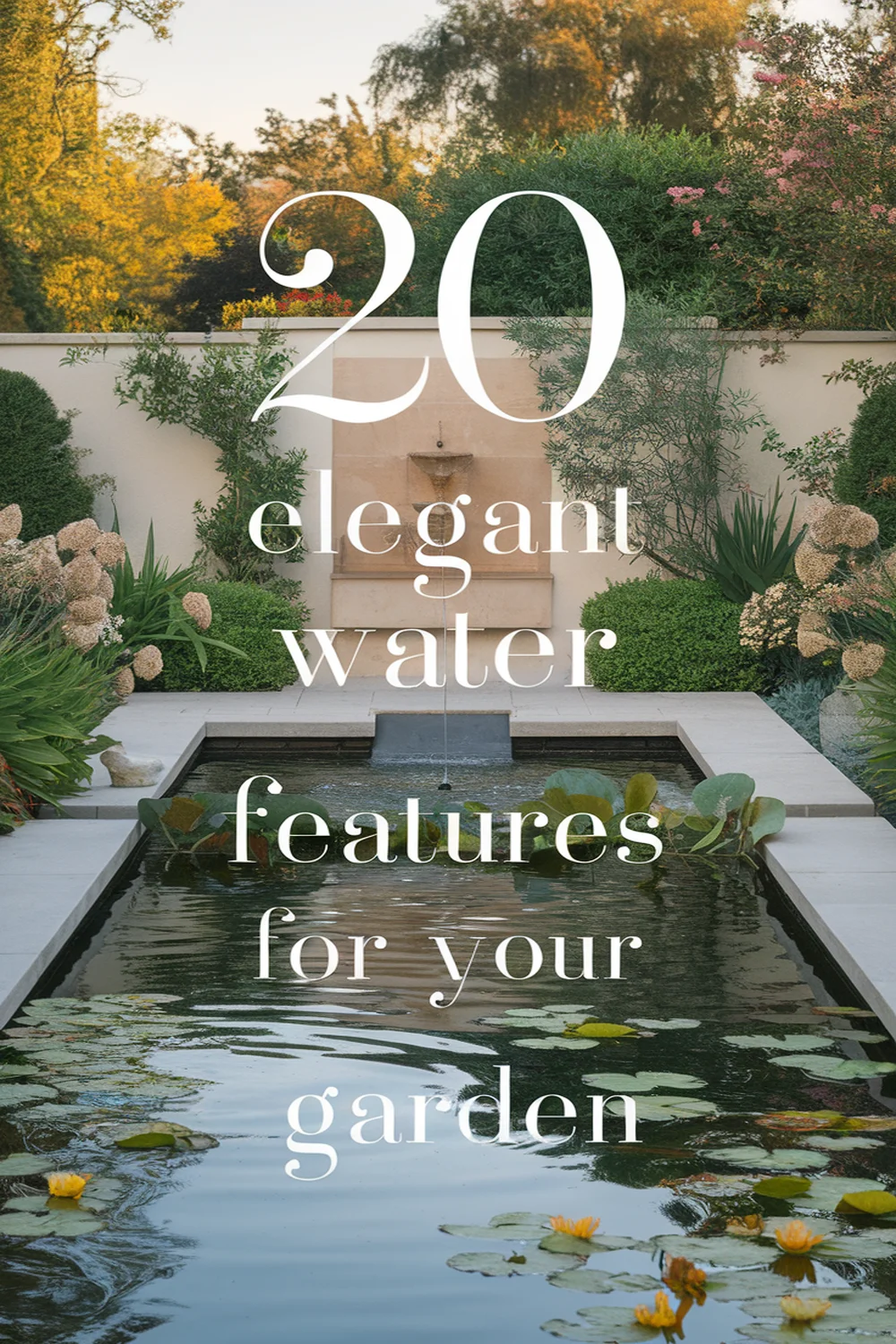This post may contain affiliate links. Please read our policy page.
Transform your small garden into a minimalist oasis by embracing simple planting with clusters of your favorite plants. Incorporate clean lines using sleek pathways and subtle furniture for relaxation. Add vertical elements like trellises to optimize space and create visual intrigue. Introduce natural textures with gravel and use minimalist lighting for ambiance. Create zones with subtle dividers and enhance airflow through open spaces. Discover even more innovative ideas to elevate your garden’s style and functionality.
Embrace Simple Planting

While it may be tempting to fill your garden with a multitude of vibrant plants, embracing simple planting can create a serene and visually appealing space. Start by selecting a few favorite species that resonate with your aesthetic. Consider lush greens, soft textures, or subtle blooms that invite calmness. Plant them in clusters to form focal points, allowing negative space to breathe life into your design. Use a limited color palette, keeping hues consistent to evoke harmony. Consider layering heights—tall grasses in the back, shorter perennials in the front—to add dimension while maintaining an uncluttered look. By sticking to these minimalist principles, your garden transforms into a tranquil retreat, encouraging reflection and connection with nature without overwhelming your senses.
Incorporate Clean Lines With Pathways

As you design your minimalist garden, incorporating clean lines with pathways can greatly enhance its aesthetic appeal and functionality. Consider using materials like sleek stone, gravel, or concrete to create visually striking paths that direct the eye and flow seamlessly through your space. Straight lines can promote a sense of order, while gentle curves can soften the look, offering a hint of playfulness. Border your pathways with low-edged plants or decorative rocks to enhance clarity and keep everything tidy. Use minimalist lighting along the edges, illuminating your pathways and inviting exploration after sunset. Ultimately, these clean lines not only guide visitors but also evoke tranquility, making your petite oasis feel more expansive and thoughtfully curated.
Use Sleek Furniture for Relaxation
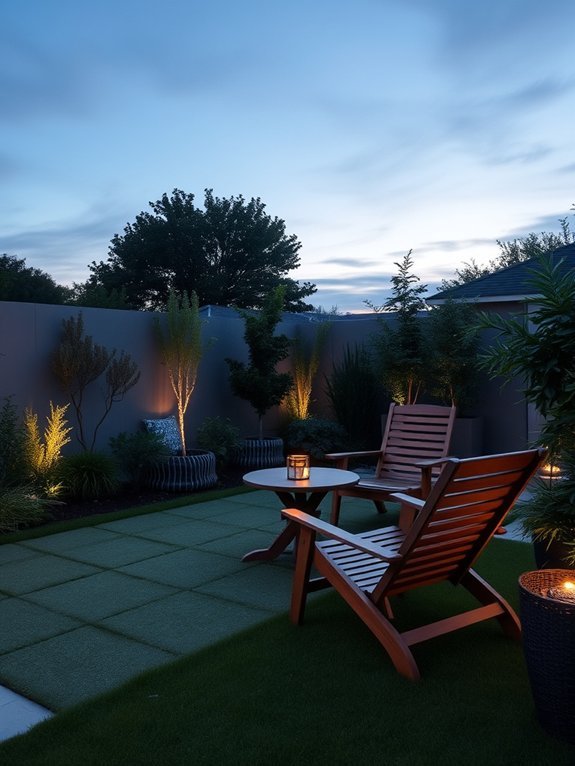
To create a serene relaxation area within your minimalist garden, opt for sleek, contemporary furniture that harmonizes with the environment. Choose streamlined, geometric pieces that offer comfort without overwhelming the space. A slim-profile bench or a couple of chic lounge chairs in muted tones can invite you to unwind while maintaining an airy feel. Consider materials like aluminum or teak for durability and an elegant touch. Adding a small side table provides a convenient spot for a revitalizing drink or a favorite book. Don’t forget cushions in subtle colors to add a hint of coziness without cluttering. This carefully curated setup transforms your garden into a tranquil retreat where you can enjoy nature’s beauty with style and ease.
Add Vertical Elements for Space Optimization
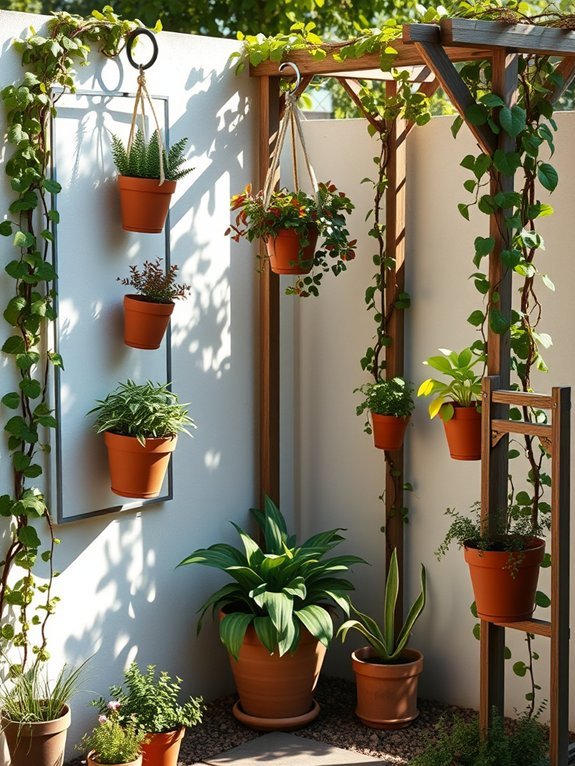
By incorporating vertical elements into your minimalist garden, you can maximize space and add visual intrigue. Think of trellises, wall planters, and hanging baskets that draw the eye upwards, transforming your garden into an elegant escape. Use sleek, geometric designs to echo the minimalist aesthetic, ensuring every piece serves a purpose. Consider climbing plants like ivy or jasmine that wrap around your supports, creating lush canopies while saving ground space. A vertical garden can even become a dynamic backdrop, offering bursts of color without overwhelming your area. Remember, light materials like repurposed wood or metal can enhance the contemporary look while remaining functional. With a little creativity, your garden can flourish—both upward and in style!
Choose a Focal Point With Statement Planters
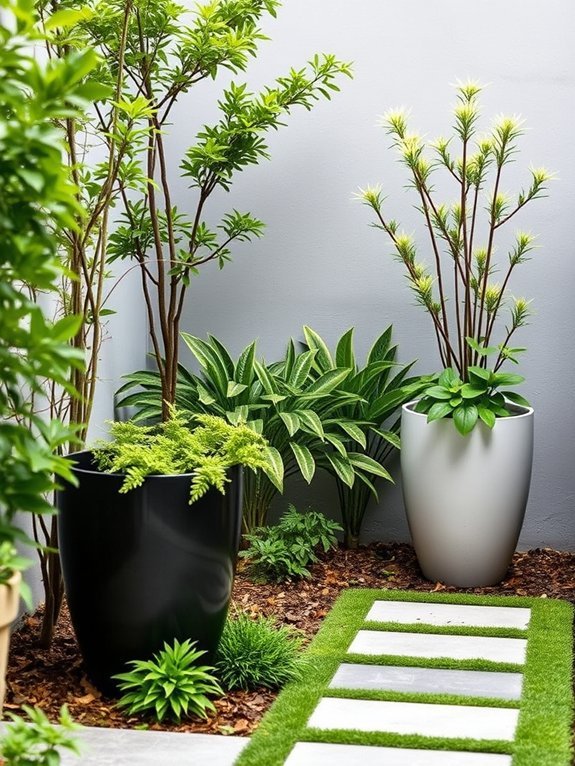
While a minimalist garden thrives on simplicity, incorporating statement planters as focal points can create a striking visual impact. Choose planters with bold shapes or unique textures to draw the eye; think geometric lines or natural stone finishes. Position them thoughtfully at entryways or along pathways to guide visitors through your space.
Consider varying heights to emphasize the plants within—tall planters can elevate cascading vines or vibrant blooms, while lower ones ground the design with subtle greenery. Don’t shy away from color: a singular vibrant planter can offer a cheerful contrast against greenery. Ultimately, the right statement planter not only showcases your style but also invites interaction, becoming a conversation starter in your serene retreat.
Opt for Monochromatic Color Schemes

Creating a cohesive and serene atmosphere in your minimalist garden can be easily achieved by opting for monochromatic color schemes. Choose a single color or shades of the same hue to unify your space, like various greens or soft pastels. This approach simplifies visual clutter, allowing each element to shine. For instance, plant lush foliage with varying textures while keeping the flower colors subtle. You might even paint planters in complementary tones, enhancing that sense of harmony. Incorporating all-white flowers against a dark pot creates an elegant contrast, drawing the eye without overwhelming it. Remember, the essence of minimalism lies in simplicity—so embrace a monochromatic palette to evoke peace and tranquility in your garden retreat.
Recommended Items
Discover our top picks for transforming your small garden with minimalist decor—let’s get started!
Introduce Natural Textures With Gravel
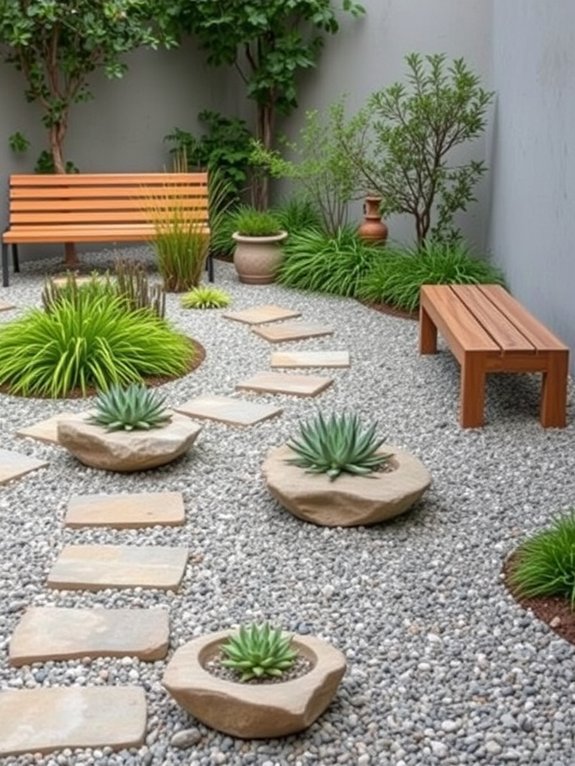
Gravel serves as a versatile and beautiful element to introduce natural textures to your minimalist garden. You can create pathways that invite exploration or designate sitting areas that enhance your outdoor experience. Choose different sizes and colors of gravel, mixing larger stones with finer textures, to add depth and interest. Consider surrounding your plants with gravel; it not only highlights their beauty, but also aids in drainage. Utilize gravel to create borders or define spaces, guiding the eye through your garden’s design. When you walk on this crunchy surface, it offers a sensory experience that softens the rigid lines of minimalist decor. By incorporating gravel, you’re transforming your garden into a harmonious blend of simplicity and nature.
Task Overview: Minimalist Garden Decor
Implement Minimalist Lighting Solutions
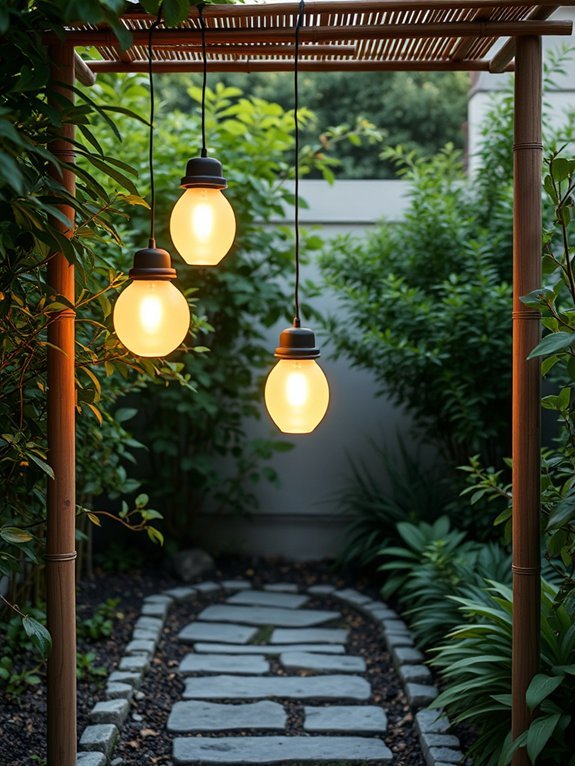
As you seek to illuminate your minimalist garden, reflect on how simple yet effective lighting solutions can enhance its beauty after sunset. Using subtle, directionally-focused lights creates an inviting atmosphere without overwhelming your space. Here are some options to reflect on:
| Lighting Type | Description |
|---|---|
| Solar Path Lights | Eco-friendly and easy to install, they’re perfect for pathways. |
| LED Strip Lights | Flexible and minimalist, these highlights can subtly accentuate edges. |
| Flood Lights | Choose adjustable ones to spotlight significant features without clutter. |
| Hanging Lanterns | Suspend them from branches for a charming, whimsical touch. |
| Wall Sconces | Install sleek sconces to reflect light, framing your garden beautifully. |
With the right lighting, you’ll create a serene ambiance that captures the essence of your minimalist garden.
Create Zones With Subtle Dividers

While you want your minimalist garden to feel open and inviting, it’s essential to establish distinct zones for different activities or experiences. You can achieve this through subtle dividers that maintain the garden’s simplicity. Consider using low, gravel paths or soft wooden panels that define spaces without overwhelming your senses. Incorporate simple plantings like lavender or ornamental grasses to create natural boundaries; they add texture while keeping an airy feel. A strategically placed bistro table can signal a cozy nook for relaxation. If you’re feeling adventurous, a sculptural piece can serve as a focal point, gently separating areas without disrupting the flow. Embrace the charm of minimalism while enhancing functionality, making your small garden a versatile retreat.
Enhance Airflow With Open Spaces
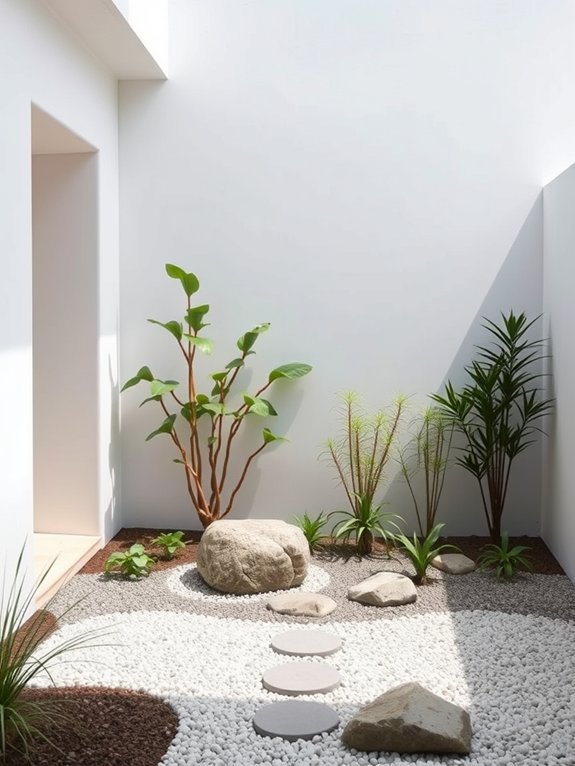
How can you create a sense of openness in your minimalist garden? Start by incorporating open spaces that allow airflow and light to dance through. Consider leaving empty patches of soil or using gravel instead of grass; this not only opens the space but adds textural contrast. Plant taller elements like vertical gardens or ornamental grasses at the back, creating depth without overwhelming the view. Arrange seating areas with movable furniture that doesn’t block pathways, inviting easy movement throughout the garden. Use strategic placement of low barriers or transparent materials, like glass or wire, to maintain sightlines. Remember, fewer obstacles mean more freedom for air to circulate, enhancing your garden’s liveliness and inviting tranquility.

